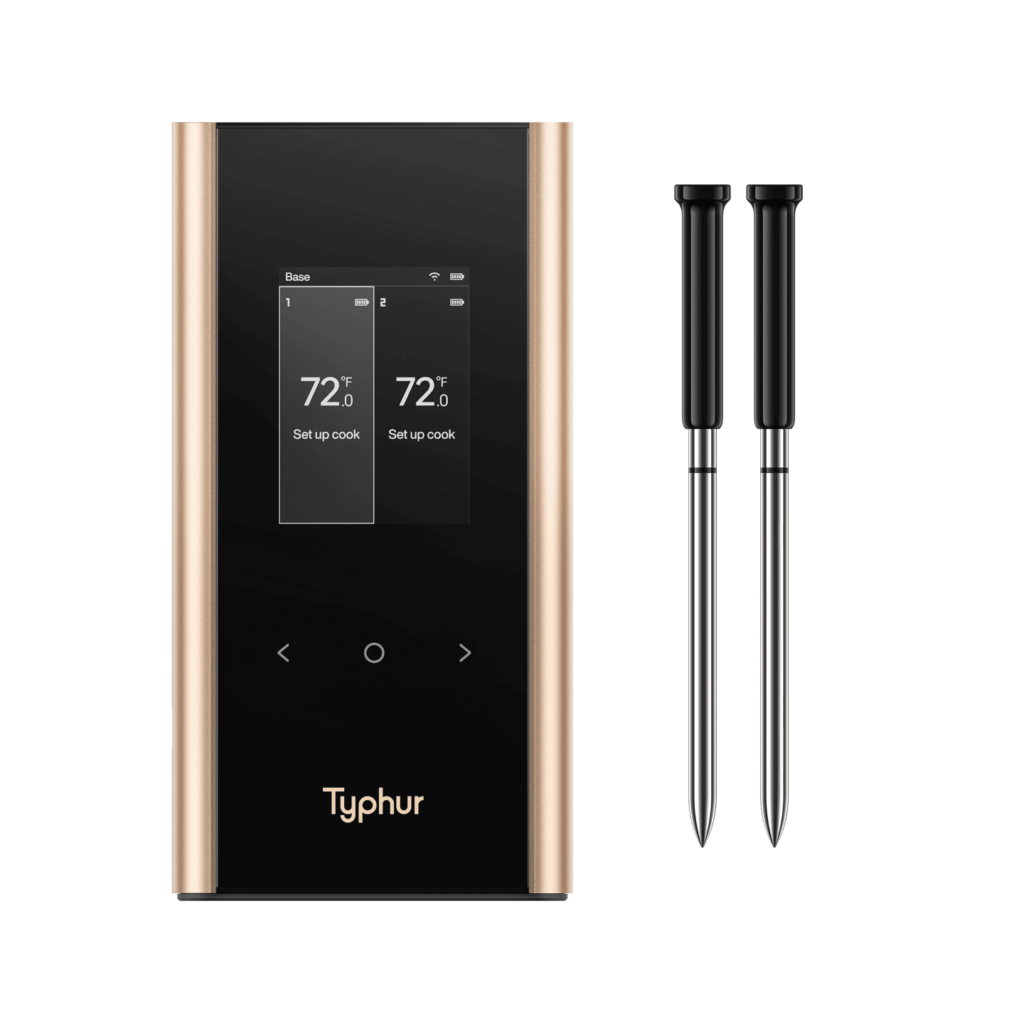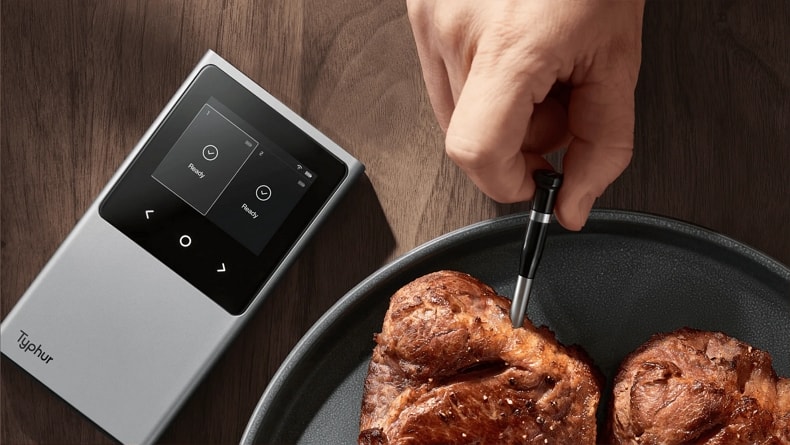Filet mignon is the jewel of steaks. Tender, buttery-good, and melt-in-the-mouth, it is the cut most people have in mind when they say “a fancy steak dinner.” But here is the catch: since filet mignon is so lean, it is just easy to botch it. If you go too long in the frying pan, you just waste that soft texture. If you are not keeping it long enough, you miss out on the flavour it is supposed to be known for.

When you wonder how to cook a filet mignon without complicating things, you join many others in such thoughts. Herein, we cover cooking times, temperatures, ingredient requirements, and a foolproof pan-searing technique for home-cooked results that can give any restaurant a run for its money.
Table of contents
Filet Mignon Cooking Times & Temperature Guide
Filet mignon’s good touch is all about heat management. Since it is a lean cut with very little fat, the margin between perfect and overcooked is small. That makes knowing the exact filet mignon temperature a must.
Here’s a quick guide to doneness levels:
| Doneness | Internal Temperature | Cooking Time (2-inch steak) | Texture & Flavor |
| Rare | 120–125°F | 3–4 minutes per side | Cool red center, very tender |
| Medium-Rare (chef’s choice) | 130–135°F | 4 minutes per side | Warm red center, buttery soft |
| Medium | 140–145°F | 5 minutes per side | Warm pink center, slightly firmer |
| Medium-Well | 150–155°F | 5–6 minutes per side | Faint pink, much firmer |
| Well-Done | 160°F+ | 6–7 minutes per side | Fully cooked, least tender |
Pro tip: Always let the filet rest for 5 minutes after cooking. The internal temperature will increase a degree or two as juices redistribute.
If you’re wondering how long to cook filet mignon, it depends on thickness and preferred doneness. Medium-rare is the perfect doneness for most people to give filet mignon its signature tenderness.
Filet Mignon Ingredients
Part of filet mignon’s charm is that it doesn’t need much. Hence, a few simple ingredients make it unforgettable.
- Filet mignon steaks: Ideally 2 inches thick and about 6–8 oz each.
- Olive oil: High smoke point for searing.
- Kosher salt & cracked black pepper: The essentials.
- Garlic cloves: Aroma during basting.
- Fresh herbs (thyme, rosemary, parsley): Aroma and flavor.
- Butter: For that glossy, rich finish
A little twist: Bacon-wrapping a filet will increase the richness and impart a smoky flavor. It will also keep the lean cut juicy through some insulation.
How to Cook Filet Mignon in a Pan Perfectly

Filet mignon is one of the most tender and elegant cuts for pan-searing. Heat for a beautiful crust and finish in the oven until the inside is cooked to your desired doneness. Follow these steps, and you will get a succulent home-cooked steak worthy of the best steakhouse.
Step 1: Bring steaks to room temperature
Take the filet mignon steaks out of the fridge for 30-40 minutes before cooking. The steak cooks evenly from edge to center. With the aid of paper towels, pat them dry; moisture will prevent a crust from developing.
Step 2: Season generously
Season all the sides of the steaks with kosher salt and fresh ground pepper. Filet mignon is very lean, no need to be shy with olorizing-it really brings out the natural beef taste.
Step 3: Heat your pan
Use a heavy, oven-safe skillet (cast iron is ideal). The pan should be preheated over the highest heat available until it is smoking. Add a thin layer of oil having a high smoke point (very suitable are canola, avocado, or grapeseed). When the oil begins to shimmer, this is your cue to proceed.
Step 4: Sear the filet mignon
- Place the steaks in the pan and sear for 2 minutes without interruption. The crust should be a very deep shade of golden brown.
- Flip it over and let the other side sear for another 2 minutes.
- Roll the steaks onto their sides using tongs, and sear each edge for 1 minute. The searing of each edge of the steak imparts a steakhouse look and also locks in the juices.

Step 5: Add butter and aromatics
With just 1 minute to go, throw in:
- 2 tbsp butter
- 2 cloves of garlic (smashed)
- 1 sprig of rosemary or thyme
Take off the heat, tilt the pan slightly, and baste the steaks with the butter; this infuses the filet with wonderful flavor and keeps it nicely moist.
Step 6: Finish in the oven
Place the entire skillet into a 400°F (200°C) oven and bake for 4–10 minutes, depending on thickness and desired doneness.
This is where the Typhur Wireless Meat Thermometer really shines. Unlike standard thermometers, it features dual probes with set precision sensors, where one can give up to ±0.5°F accuracy. The probe gets inserted into the thickest part of one of the filets, and the pan gets pushed inside the oven. While the thermometer is connected to the smart base or through an app, you get all the updates in real time without opening the oven door.

Long Range Wireless Meat Thermometer
Pull the steaks about 5°F before your target temp, since they’ll continue cooking as they rest.
Step 7: Let Rest and Serve
Transfer the steaks to a warm plate, tent loosely with foil, and let them rest for 5–7 minutes. Resting allows juices to redistribute, allowing a tender and juicy bite every time.
Top with the garlic-herb butter from the pan, or add a pat of compound butter for extra indulgence. If you want to go all out, drizzle with a sauce like béarnaise or a simple red wine reduction.
Expert Tips for the Perfect Filet Mignon
Some techniques take your filet mignon from good to memorable:
- Use the proper thermometer: Don’t leave doneness up to chance. The wireless meat thermometer can get you an exact reading within ±0.5°F, giving you a real-time alert so you can pull your filet at the right temperature every single time.
- Go for the thick ones: A 2-inch filet gives you slightly better control between the pan and the oven; it sears beautifully and the center is not overcooked.
- Bacon-wrapped for flavor: A bacon-wrapped filet will add fat and flavor, with a hint of glamor. To get it just right, you want to sear first, crisping the bacon, and then finish baking the steak in the oven.
- Butter-basting: Baste during the last moment of searing with garlic-herb butter. It adds flavor and gives the steak that glossy finish worth of any steakhouse.
- Rest and slice: After finishing the cooking process, set the steaks to rest for 5–7 minutes. If this step is ignored, you will find the juices lost on the cutting board instead of the plate.
These small details are what make the difference when learning how to cook filet mignon like a professional chef.
FAQ
What to serve with filet mignon?
Serving filet mignon with simple accompaniments is the way to go. Garlic mashed potatoes, grilled asparagus, creamed spinach, and a fresh green salad come to mind. A thick, rich red wine sauce or peppercorn cream sauce is superb.
What cut is filet mignon?
A filet mignon originates from the tenderloin, which is a long, lean muscle found opposite to the spinal cord of a cow. It is the tenderest cut of beef, and hence, it sees greater demand and commands a higher price in the filet mignon market.
Is tenderloin the same as filet mignon?
Not exactly. The tenderloin is the whole muscle, while filet mignon is the specific portion cut from the smaller end of the tenderloin. So all filet mignon is tenderloin, but not all tenderloin is filet mignon.
Summary
Cooking filet mignon at home doesn’t have to feel intimidating. A cut of choice, great seasoning, and a method that perfectly balances a hot searing and gentle oven finish can land you a steakhouse-quality steak in your own kitchen. In fact, once you understand how to cook filet mignon step by step, it becomes a dish you can master with confidence.
This is where the Typhur Wireless Meat Thermometer technology takes the process to the next level. The thermometer brings to life the temperature tracking in real-time and pinpoint accuracy so that every single time you get perfection in your filet mignon. Rare in the center or on the rare side of medium, the Typhur thermometer takes away all the stress and leaves you with the real thing: a tender and juicy filet mignon easy!




